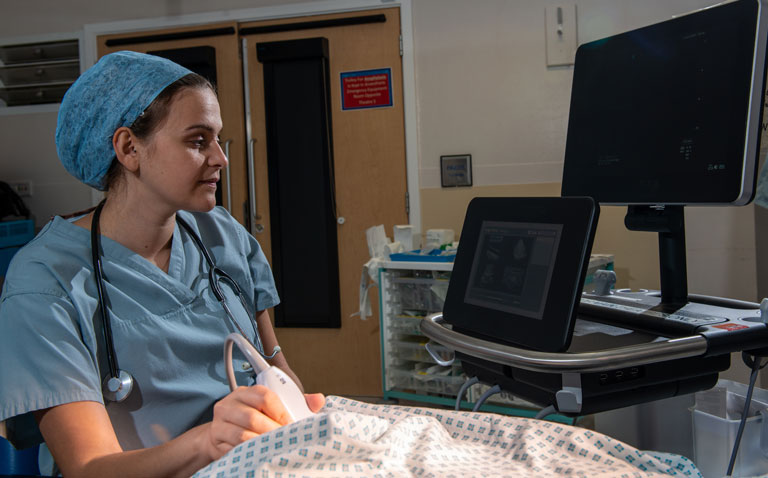Using CAR-T cell therapy controlled with focused ultrasound improved solid tumour suppression and mitigated off-target activity in mice.
The treatment of cancer has traditionally involved surgery, chemotherapy or radiotherapy although in recent years, there has been increased interest in immunotherapy which makes use of the patient’s immune system to fight cancer. One form of immunotherapy is Chimeric Antigen Receptor (CAR) T-cell therapy which involves genetic modification of a patient’s T cells to express a specific tumour antigen. After modification, these modified T cells are infused back into a patient, attacking and destroying chemotherapy-resistant cancer. However, a major limitation to the use of CAR-T cells is that the tumour antigen can also be expressed by normal, healthy tissue and the modified T cells are unable to differentiate between malignant and benign cells. It is therefore not always easy to identify a specific antigen that is preferentially expressed on tumour cells. This led a team from the Department of Bioengineering, University of California, US, to create inducible cells that were engineered to express the surface protein but only in response to short-pulsed, focused ultrasound stimulation.
Findings
The team subcutaneously injected the specific CAR-T cells at the site of a tumour in mice, followed by three 5-minute pulses of focused ultrasound at 43 degrees centigrade. This resulted in a significant reduction in tumour size. To ensure that it was specifically the combination of the CAR-T cells and focused ultrasound that were shrinking the tumour, the team used two control groups of mice with tumours. In one group, the pulsed ultrasound was used in the absence of the specific CAR-T cells injected and this had no impact on tumour growth. The second group of mice also received the ultrasound but this time, but this time in the presence of naïve T cells, as opposed to the CAR-T cells and again, there was no effect on tumour growth. Finally, the researchers examined whether localised, pulsed ultrasound was effective using mice with both a local and distal tumour. Injection of standard CAR-T cells reduced the size of both the local and distal tumour. However, after injection of the CAR-T cells and directing the ultrasound only at the local tumour, there was a dramatic reduction in size of the local, but not distal tumour.
Discussing their findings, the authors noted the use of the targeted pulsed ultrasound was a potentially effective approach to the treatment of localised tumours. They added the local administration of the CAR-T cells has already been tested in animals and patients and a further advantage of their technique was the potential for a reduction in off-target activity, i.e., where the CAR-T cells affected healthy tissue.
While this novel approach appeared to be effective, further work is required to ensure that the method represents a much safer form of cell therapy.
Citation
Wu Y et al. Control of the activity of CAR-T cells within tumours via focused ultrasound. Nat Biomed Eng 2021










